Accepted Scientific Name: Titanopsis schwantesii (Dinter ex Schwantes) Schwantes
Z. Sukkulentenk. ii. 179 (1926).
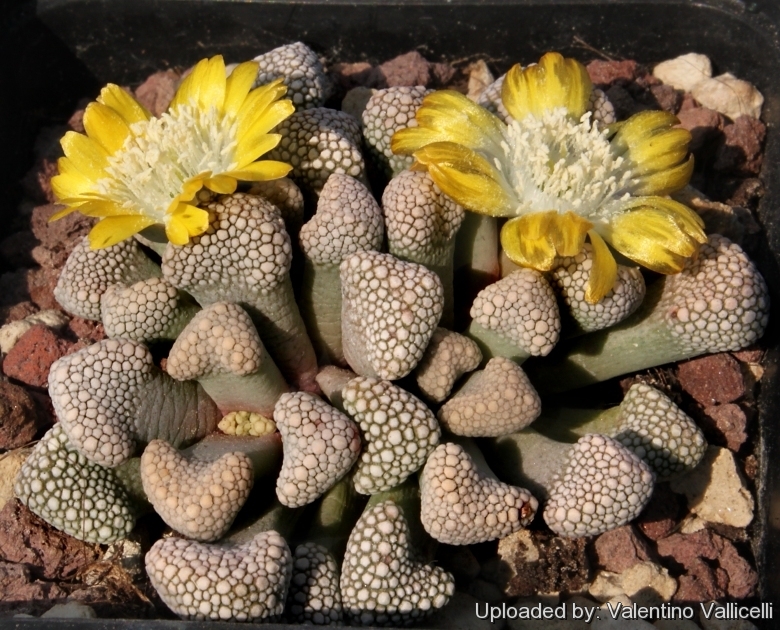
Mesembryanthemum concinnum (Titanopsis schwantesii) Photo by: Valentino Vallicelli
Locality Klein Karas (Mesa garden Catalogue MG 1878.3 )
Origin and Habitat: Southern Namibia.
Habit:The delicate, frosted wafers of Titanopsis schwantesiiSN|13458]]SN|13458]] grows thickly nestled into pebbles and gravel which this Titanopsis resembles to an unbelievable degree, this camouflage allows them to escape detection and is a very effective strategy for escaping predation. It comes from winter rainfall areas but will easily adapt to a summer watering regime and is probably the most common among these plants.
Synonyms:
See all synonyms of Titanopsis schwantesii
back
Accepted name in llifle Database:Titanopsis schwantesii (Dinter ex Schwantes) SchwantesZ. Sukkulentenk. ii. 179 (1926).Synonymy: 7
back
Description: Titanopsis schwantesiiSN|13461]]SN|13458]] is a plant of unique appearance which look very rock-like in habitat. The leaves grow in small rosettes and their tips are densely covered with white warty tubercles. The flowers are yellow in spring.
Habit: It is a mat forming succulent with clusters of basal rosettes.
Similar species: It is similar to Titanopsis calcareaSN|13463]]SN|12599]] , which is more a summer grower with flatter leaf tips and flatter rosettes. T. schwantesii has more erect leaves and smaller frosted warts on the somewhat rounding tips. Crassula ausensisSN|27333]]SN|27333]] subsp. titanopsis, was named for its resemblance to Titanopsis schwantesiiSN|12599]]SN|13458]] growing in the same habitat.
Stem: Very short with internodes not visible.
Rosettes: up to 5(-7) cm wide, usually with 6-8 (or more) crowded opposite leaves.
Leaves: Short, fleshy, spathulate, with rounded ends up to 3 cm long and 3-7 mm broad toward the base and up to 12 mm broad above, mostly chunky white or grey. Upper and lower surface covered with greysh-white, yellowish, flesh-coloured, greyish-brown regular or yellowish-brown flat warts. (Leaves of Titanopsis calcareaSN|13458]]SN|12599]] are considerably larger, flatter with a more spoon-shaped apex and a mix of large and small warts). Old leaves will die off very slowly.
Flowers: Solitary, stalked, with usual mesemb ‘daisy’ form, 15-18 mm in diameter, pale canary yellow ( with flesh coloured tips in Titanopsis primosiiSN|12599]]SN|13463]] ). Petals numerous in two whorls. Sepals 5(-6) with tubercles like those on the leaves and with membranous margin. Stigmas 5-6.
Blooming season: Titanopsis luderitziiSN|13458]]SN|13461]] flowers in the afternoon in early spring.
Fruit: Capsules 5-6-chamberd.
Notes: The Genus Titanopsis comprises three to six species, depending on botanists' opinions. Some botanists have now lumped Titanopsis lüderitzii and Titanopsis primosiiSN|13463]]SN|13463]] in with Titanopsis schwantesii.
The species list for Titanopsis is considered to be Titanopsis calcareaSN|12601]]SN|12599]], Titanopsis fulleriSN|12599]]SN|12601]] ( = calcarea ), Titanopsis hugo-schlecteri, Titanopsis lüderitzii ( = schwantesii ), Titanopsis primosiiSN|13463]]SN|13463]] ( = schwantesii ), Titanopsis schwantesii
Bibliography: Major references and further lectures
1) Heidrun E. K. Hartmann “Aizoaceae F – Z” Springer, 2002
2) James Cullen, Sabina G. Knees, H. Suzanne Cubey “The European Garden Flora Flowering Plants: A Manual for the Identification of Plants Cultivated in Europe, Both Out-of-Doors and Under Glass - Casuarinaceae to Aristolochiaceae” Cambridge University Press, 11/ago/2011
3) Hermann Jacobsen, Vera Higgins “Succulent Plants: Description, Cultivation and Uses of Succulent Plants, Other Than Cacti” Williams and Norgate, Limited, 1935
4) Jacobsen. “Handbook of succulent plants” 1328 (1960)
5) H. Herre “The genera of the Mesembryanthemaceae” Tafelberg-Uitgewers Beperk, 1971
6) Montague Free, Marjorie J. Dietz "All About House Plants: Their Selection, Culture, and Propagation and How to Use Them for Decorative Effect" Doubleday, 01/gen/1979
 Mesembryanthemum concinnum (Titanopsis schwantesii) Photo by: Valentino Vallicelli
Mesembryanthemum concinnum (Titanopsis schwantesii) Photo by: Valentino Vallicelli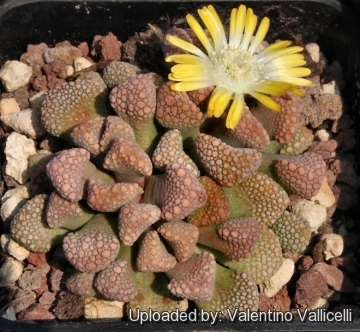 Mesembryanthemum concinnum (Titanopsis schwantesii) Photo by: Valentino Vallicelli
Mesembryanthemum concinnum (Titanopsis schwantesii) Photo by: Valentino Vallicelli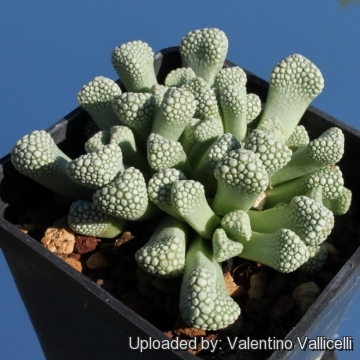 SB2156 (Collector: Steven Brack) Locality: Onverwacht, Grabwasser, Namibia. (Titanopsis schwantesii) Photo by: Valentino Vallicelli
SB2156 (Collector: Steven Brack) Locality: Onverwacht, Grabwasser, Namibia. (Titanopsis schwantesii) Photo by: Valentino Vallicelli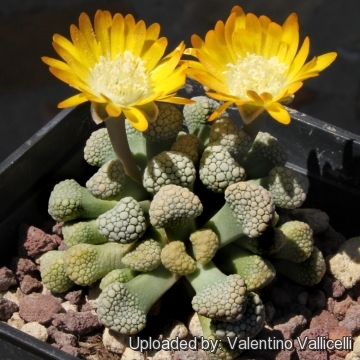 Mesembryanthemum concinnum (Titanopsis schwantesii) Photo by: Valentino Vallicelli
Mesembryanthemum concinnum (Titanopsis schwantesii) Photo by: Valentino Vallicelli Mesembryanthemum concinnum (Titanopsis schwantesii) Photo by: Valentino Vallicelli
Mesembryanthemum concinnum (Titanopsis schwantesii) Photo by: Valentino Vallicelli Mesembryanthemum concinnum (Titanopsis schwantesii) Photo by: Valentino Vallicelli
Mesembryanthemum concinnum (Titanopsis schwantesii) Photo by: Valentino Vallicelli - Locality Klein Karas (Mesa garden Catalogue MG 1878.3 ) (Titanopsis schwantesii) Photo by: Valentino Vallicelli
- Locality Klein Karas (Mesa garden Catalogue MG 1878.3 ) (Titanopsis schwantesii) Photo by: Valentino Vallicelli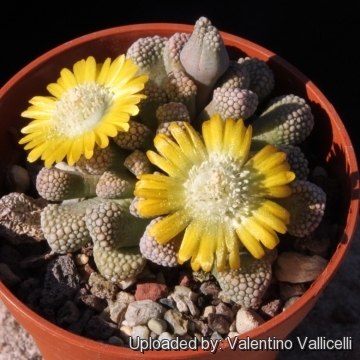 - SB2156 (Collector: Steven Brack) Locality: Onverwacht, Grabwasser, Namibia. (Titanopsis schwantesii) Photo by: Valentino Vallicelli
- SB2156 (Collector: Steven Brack) Locality: Onverwacht, Grabwasser, Namibia. (Titanopsis schwantesii) Photo by: Valentino VallicelliCultivation and Propagation: This species is easy to grow and clumps readily, forming a beautiful succulent mat. This is a winter grower species, but in cold climates we expect most growth in spring and autumn when the weather is cool but the sun is strong. Needs moderate water when growing in late fall and early spring. Keep somewhat dry the rest of the time. It will need a little water even in summer, just enough to stop excessive shrivelling. Over-watering makes the old leaves die off more quickly, and can also produce rot. Like all living rocks, they thrive in porous soils with excellent drainage. It can tolerates high heat and heavy frost to -10° C. Enjoy bright shade in summer and full sun during the other seasons.
Propagation: They grow quickly from seed or by division of larger clumps, including a piece of the rootstock.
Your Photos
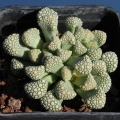
by Valentino Vallicelli
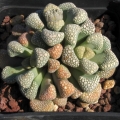
by Valentino Vallicelli





















